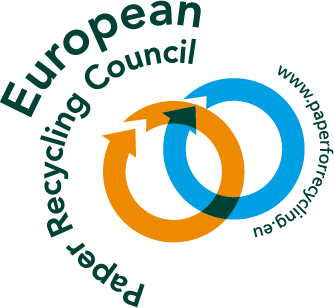
The recycling process
The collection of used paper and board is the first step in the recycling process. There are different national and regional collection systems for paper. Papermakers usually buy their raw material for recycling from paper for recycling merchants. These merchants may be owned by paper mills and be an integrated part of a paper company, or they may be an independent firm which specialises in particular types of paper or which perhaps operates in a smaller geographical area.
In Europe, a growing amount of used paper is supplied by waste management companies. This is helping to increase availability of paper for recycling and reduce the amount of paper going for landfill.
Until recently, apart from old newspapers and magazines, most paper for recycling came from industrial and commercial sources, because it is cleanest and most economical to collect. As demand for paper for recycling has grown households and offices have been tapped into, to a large extend.
The collecting system in operation must be cost-effective and efficiently organised so that the necessary volumes and qualities of recovered paper can be obtained for recycling. The paper mills that depend on paper for recycling must have assurance of a regular supply.
Paper for recycling has to be collected separately from other materials. It is important that it is kept separate from other waste as contaminated papers are not acceptable for recycling. If, exceptionally, paper is collected together with other recyclable materials, such paper for recycling must be specifically marked.
The requirements of the papermaker must also be taken into account: a packaging manufacturer can use mixed types of paper for recycling while a manufacturer of printing and writing (graphic) paper can only use certain paper for recycling types. Therefore, paper for recycling is usually sorted and graded then delivered to a paper mill.
Pulping
Broadly speaking, the final production process for paper recycling is the same as the process used for paper made from virgin fibres but, as the paper for recycling fibres have already been used, they also have to be sorted and cleaned. For certain papers (e.g. printing and writing paper and hygienic products) ink has to be removed from the paper for recycling. This is called de-inking (see below).
Having reached the paper mill, paper for recycling is ‘slushed’ into pulp and large non-fibrous contaminants are removed (for example staples, plastic, glass etc.). The fibres are progressively cleaned and the resulting pulp is filtered and screened a number of times to make it suitable for papermaking.
De-inking
Before the paper for recycling can be used to manufacture certain types of paper the printing inks have to be removed to increase the whiteness and purity.
During this stage the ink is removed in a flotation process where air is blown into the solution. The ink adheres to bubbles of air and rises to the surface from where it is separated. After the ink is removed, the fibre may be bleached, usually with hydrogen peroxide. The pulp is then ready to be made into paper. Depending on the grade of paper being produced, quantities of virgin pulp from sustainable sources may be added. Some papers, such as newsprint and corrugated materials, can be made from 100% recycled paper.
Once the paper is used, it can be recycled and the process starts again.
The EPRC has adopted an assessment scheme entitled the ‘deinkability scorecard‘, to promote the eco-friendly design of printed products. Such designs are recyclable and promote sustainable production processes.
The scheme is designed to allow printers, publishers and other members of the paper value chain to identify which types of printed paper products have the best recyclability when they are deinked. Five parameters luminosity, colour, cleanliness, ink elimination and filtrate darkening are considered in a widely accepted standardised test developed by the International Association of the Deinking Industry (INGEDE).
